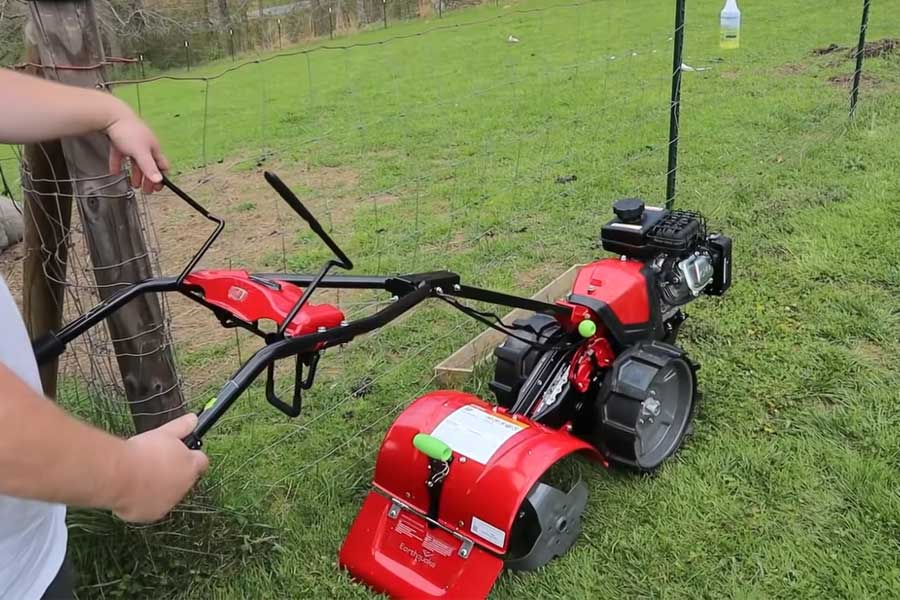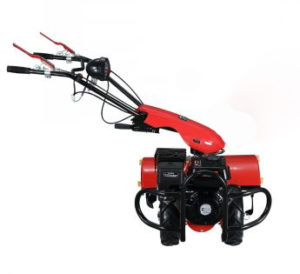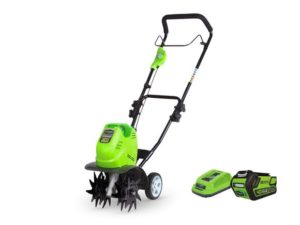Garden tilling is a tough job that can be simplified by using the best Garden tiller. A garden tiller will break up hard dirt and grass, allowing you to plant more easily. It’s also good for mixing soil, adding fertilizer, and generally working on your garden bed.
A garden tiller is an important tool for people who wish to turn the soil in their gardens. Soil that has not been turned, or tilled, can become cloddy and hard-packed over time. This prevents water from soaking into the ground and plants from being able to grow easily. It also makes it difficult for a gardener to plant seeds because they will have trouble reaching deep enough through the dense soil layer. A good garden tiller will be powerful enough to break up even the most compacted of soils so that a gardener can effectively work with it again.
There are many different types of garden tillers on the market, and it can be hard to know which one is the best for your needs. This blog will tell some of the most popular garden tillers on the market, to help you make an informed decision about which one is right for you.
Table of Contents
Choosing the Best Garden tiller for You
When it comes to choosing the best garden tiller for your needs, there are a few factors you’ll want to consider. The first is what type of soil you have – if it’s hard and clay-like, you’ll need a tiller that can handle that type of terrain. If you have a lot of organic material in your soil, you’ll want a model that can chop up the organic matter evenly.
Another thing to consider is how big your garden is. If you have a small garden, you’ll probably be fine with a hand-held tiller; but if you have a larger garden, you’ll need something that’s more powerful. And finally, think about how often you plan to use your tiller – if it’s just once or twice a year, you might want to consider renting rather than buying.
What are the types of Garden tillers?
When it comes to picking the best garden tiller, there are a few factors you need to consider. The first factor is the type of tiller – there are three types of tillers: manual, petrol and electrical.
Once you’ve considered these factors, you can then choose the best garden tiller for your needs. Manual tillers are good for small gardens, petrol tillers are good for medium-sized gardens, and electrical tillers are good for large gardens.
Manual tiller
A manual tiller is the cheapest type of tiller you can buy. However, they’re not very powerful and they require plenty of physical effort to use.
Petrol tiller
Petrol tillers are more expensive than manual tillers, but they’re much easier to operate because you don’t have to push them. They’re also more powerful, which means tilling the soil is quite fast. Petrol tillers usually have a four-stroke engine, so they aren’t nearly as polluting as two-stroke models.
Electrical tiller
Electrical tillers are the most expensive option of all three types of garden tillers. As well as being expensive to buy, they’re expensive to run because electricity isn’t cheap. However, electrical tillers are very easy to operate and make less noise. They can also be controlled via remote control.
The Best Garden Tiller to buy
1. Garden Tiller Cultivator 8HP 4 Stroke Rototiller
This tool is perfect for those with large gardens or high appetites, as it packs a lot of power into its small frame. This Garden Tiller Cultivator is a reliable, durable machine that will take the work out of maintaining your vegetable garden.
The “Garden Tiller Cultivator Rototiller” features a powerful petrol engine, capable of producing 8 horsepower. This is enough power to turn the machine’s 330-millimetre steel tines at speeds of up to 1,000 rpm, helping to break up hard soil and create a fine seedbed.
The tiller also has the ability to set up vertically or horizontally, allowing it to switch effortlessly between different applications. The 18-piece hard-drawn and synchronous rotating steel tiller blades quickly break up the ground, while the large tyres and heavy-duty tilling tines provide stability.
2. Greenworks Garden Tiller G-Max 40v Li-Ion 2.0ah Kit
The Greenworks Garden Tiller is the perfect tool for small gardens. It is lightweight and powered by a cordless battery, so it is easy to manoeuvre. The gear-driven transmission allows it to handle tough soils, and the adjustable tine width and depth make it easy to use on different types of soil. The 6” rear wheels make it easy to manoeuvre over uneven ground.
The Greenworks Garden Tiller is powered by a rechargeable 40-volt lithium-ion battery. It has an operating time of up to 50 minutes, and the electric start makes it easy to get going. It has an adjustable tine width from 21cm – 25cm and an adjustable tilling depth of up to 13cm. The Greenworks garden tiller has a durable gear-driven transmission, and the lightweight design makes it easy to transport the unit around your yard and garden.
FAQ’s
What is the difference between a rototiller and a tiller?
A rototiller is an attachment to a tractor. It can be of various shapes and sizes, depending on the manufacturer. A tiller, on the other hand, is not an attachment to a tractor but just a type of garden tool that uses rotation or oscillation to dispose of aggregate over the surface. Both devices do the same thing—obliterate dirt clods by spinning them away from soil particles—but they’re intended for different purposes: Tilling extends soil’s depth; rototillers smash weeds and loosen compacted earth.
What kind of tiller do I need for my garden?
When it comes to tillers for your garden, there are a few different factors you need to consider. The first is the size of your garden- both in terms of the amount of ground you need to till and the width and depth of the tiller itself. The second factor is the type of soil you’re working with- some soils are harder than others and may require a more powerful tiller. Finally, you’ll also want to consider your own strength and abilities when choosing a tiller.
Is a tiller the same as a cultivator?
There is some overlap between the use of tiller and cultivator, but they are not exactly the same. A tiller is typically used to till the soil before planting, while a cultivator is used to loosen the soil and remove weeds.
Is it worth buying a tiller?
You should think about the usage rate of the machine and what kind of work you will need it for before going out and purchasing one as well as how frequently you can use it. Renting may be better if you only need the machine occasionally. If this assessment resonates with what your needs are then owning a tiller might be something for you to look into due to being more cost-effective in many cases compared to renting.


